
Photos: Formula Motorsport Ltd
A French long-time F1 junior wins two F3 races with ART GP, joins them in F2 the next year and comes fifth in the points. Rather than live up to their title favourite tag the year after, their confidence gets severely tested
Health, more than skill or knowledge, is the primary determinant of human performance. And in sport, being in top shape means strong mental health as well as being in peak physical condition.
Theo Pourchaire is an example of a driver who has been let down in this respect by his mental health more than once, and returning to his happiest and highest performing state earlier this year in IndyCar (before losing his seat in a way that made headlines worldwide) may have improved his results in that series and his career as a whole but not his chances of racing in Formula 1.
That was shown when the Sauber team, which he is the reserve driver for, chose his birthday to announce that it would run the sportscar-racing active Robert Shwartzman in free practice one at the Dutch Grand Prix. His former team-mate Victor Martins needs to avoid being shunned in a similar way, which requires him to not repeat Pourchaire’s F2 path…
Theo Pourchaire
In July 2020, Pourchaire became the youngest winner in GP3/FIA Formula 3 Championship history aged 16, and after turning 17 made his Formula 2 debut in November with the often struggling HWA Racelab team. He may have finished no higher than 18th in his four races, but took a confidence boost.
“I learned a lot for next year,” he said. “And for sure from the F3 drivers, I’m the most prepared driver for next season.”
Pourchaire had come second to Oscar Piastri in F3’s six-way title fight, and only three of his title rivals were F2-bound. They all started 2021 strongly there though. Liam Lawson won and David Beckmann was third in the opening race at Bahrain, and Piastri won race two. Meanwhile ART Grand Prix driver Pourchaire’s best result in the first four races was sixth.

Pourchaire in Monaco
However during round two in Monaco he became the youngest ever poleman in single-seater racing’s second tier, achieved by a big margin in laptime terms around a short lap, then the youngest winner in F1’s primary feeder series. Cue another bold statement, saying “I just disconnected my brain” during qualifying after being “not super confident” in practice.
That weekend put the long-time Sauber junior into the running for a 2022 F1 seat at the Alfa Romeo Racing team that Sauber ran, but he fractured his arm in a crash and fell to sixth in the standings during round three in Baku and by the time he made his F1 test debut in August it was Alpine junior Guanyu Zhou who was favourite for an Alfa Romeo seat.
Pourchaire won a sprint race and was second in a feature race in the season’s second half, far off the raised expectations, but was still in title contention when Zhou’s graduation from F2 was confirmed in November. Alfa Romeo still had a plan for Pourchaire, giving him a test driver role and making clear that should he win the F2 title in 2022 then an F1 seat could be his.
Two wins in the first three rounds of his sophomore season put him in the points lead and indicated that staying at ART GP was the correct choice, but after that he was always chasing MP Motorsport’s Felipe Drugovich.
Once he dropped to second, Pourchaire claimed his approach was “to take each race as it comes” and the title was not on his mind, but clearly no longer being the chased rattled him and it only took one race of finishing behind his team-mate for him to say: “My team-mate was faster than me, and that’s not normal. I can’t accept that.”
Sometimes Pourchaire – still only 18 – seemed entirely focused on F2 and therefore when things went wrong it stung. A lot. Other times his confidence in making it to F1 carried him, but also proved to be an ultimately destructive distraction. And he started to recognise that, as he admitted in an incredibly candid conversation with Formula Scout that year.
Once the F2 title fell out of Pourchaire’s reach, Alfa Romeo added a second season to Zhou’s contract. In October the team handed Pourchaire his F1 free practice debut, then announced he would be reserve driver in 2023.
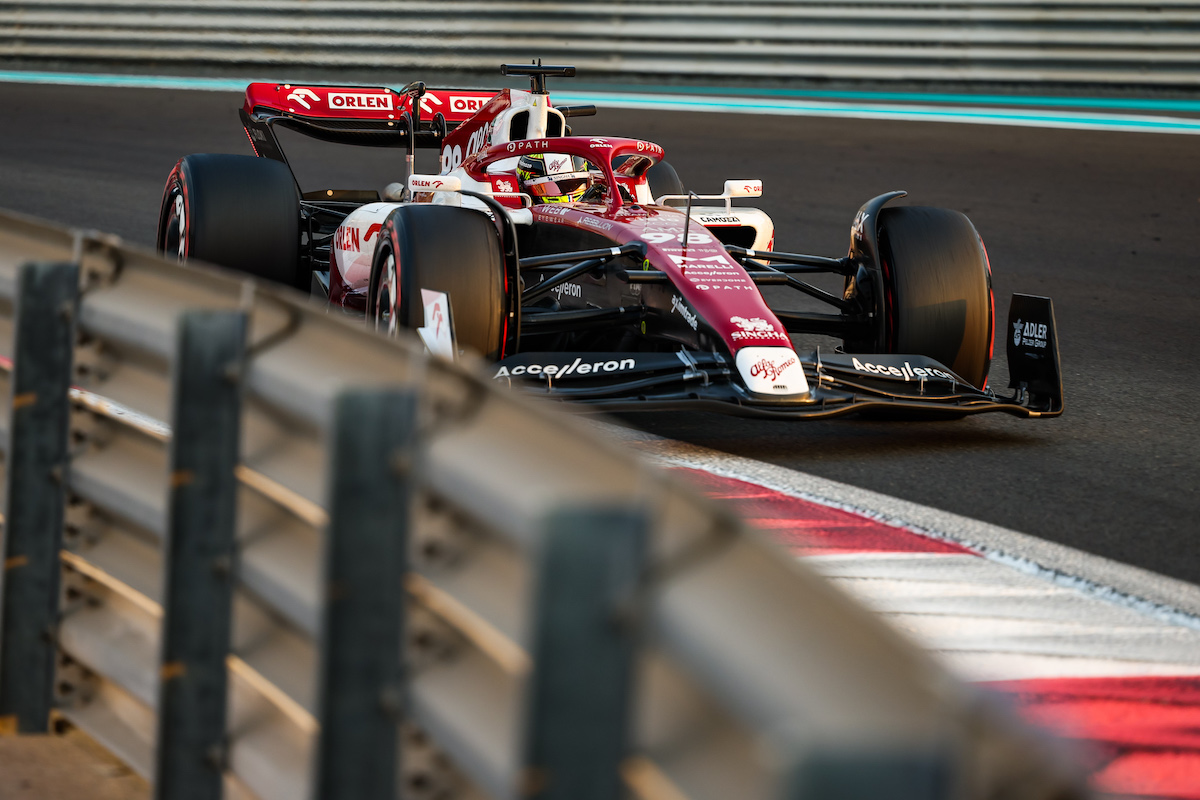
Photo: Alfa Romeo
Frederic Vasseur, who brought Pourchaire into the Sauber setup and was team principal, left for Ferrari in December but the restructured leadership had faith in their protege (albeit not enough to give him an F1 seat) and chose to fully fund a third F2 season with ART GP for Pourchaire and with the same target set. Would the 19-year-old’s mindset be different this time?
He moved to Switzerland to be close to Sauber’s factory, working day-to-day with the F1 crew in a way that aided his mental strength, and began his season with pole at Bahrain. He revealed that through winter “I worked a lot on my qualifying pace because last year I struggled a lot”, an admission he hadn’t been making in 2022.
Pourchaire added he was already “much more relaxed than last year” and that “it will be important to be focused on only myself, my driving”, and after converting pole into a dominant victory in Bahrain said “I could have driven a lot faster”. Another bold statement followed by another downturn as he only scored once in the next five races.
He was lacking qualifying confidence again by round two, but after reclaiming the points lead with a podium in round four claimed he was now better in qualifying and more consistent in races. Then said: “I’m not superstitious a lot, but…”
In the middle of a conversation about his increased involvement in Sauber’s F1 operation, Pourchaire made a contrasting remark that “I’m putting all my efforts to do a good job in F2”. While he claimed the former helped the latter, after round seven he had scored less than at that point in 2022 and was second in the standings. A double podium in round 10 returned him to the top of the table, but the next round he had an injury-inducing crash. A familiar turn of events.
He bounced back with pole in the penultimate round at Monza, “a crazy feeling” after a tail-off in qualifying form, and grew his lead to 25 points. Two weeks later, Sauber renewed Zhou’s and Pourchaire’s contracts and started work on finding the latter a racing programme (with F2 a possibility if he lost the title) for 2024.
By the time he reached the F2 finale, the title was comfortably in Pourchaire’s grasp. But driving in F1 practice left him “mentally, physically, really tired” and several factors combined to set up his worst qualifying result since 2022.

Photo: Alfa Romeo
“I’m young and I still have the time and I know I will have an [F1 race] opportunity in the future,” he stated confidently in the Yas Marina paddock while wearing his Alfa Romeo overalls.
Pourchaire won the title, but the weekend was “stressful” and a huge mental loss despite taking personal pride in his drives to seventh and fifth place. Had he failed to become champion, it was perfect ammunition for claims that Sauber made the right decision with its 2024 line-up, and even a line that Sauber’s new management could have used to defend its driver strategy.
But since he did win the title, aged 20, all he was left to think about was that F2 had been a means to an end that had failed.
“There is no [rule], it’s not because you are an F2 champion that you will have a place in F1,” said a “dissapointed” Pourchaire. “I did my best. And the goal that Sauber Academy told me, it was to win the championship, and I did it.”
He already knew that spending 2024 doing test and practice sessions in an Alfa Romeo would “not be the case for me”, so a move to Super Formula was lined up to keep him race fit. A new environment was also an opportunity where he could perform at the same level inside the cockpit and, regardless of the results, be seen in a different light.
While not outright acknowledging the perception of his F2 results hadn’t already done so, Pourchaire said that by racing in SF he could show the F1 paddock – rather than just Sauber – “that I’m able to be really fast and that I deserve a place there”.
Both elements of that statement were key, because it was one spectacularly fast weekend that many saw as Pourchaire’s peak which he then failed to live up to, rather than his most impressive achievement in his career being that he was the driver who best navigated the ups and downs of an F2 season to become its champion. Taking the title with the second-lowest winning rate in the history of second-tier single-seaters explains that mismatch.
Being fastest wasn’t going to achieve that title goal, and drivers admitting to dialling down pace to be more consistent has been far more pronounced with F2’s new car this year than in 2023, but being fastest still sets expectations and the driver who was quickest last year was Pourchaire’s rookie team-mate Victor Martins…

Pourchaire, Ayumu Iwasa & Martins
2024 and beyond
Pourchaire’s place on the SF grid with Team Impul was confirmed 16 days after his F2 crowning, and on his debut at Suzuka this March he qualified 16th and finished 18th.
Although Pourchaire did not know an opportunity to race in another series was coming that would take him away from SF, he already knew he was unlikely to be on the grid beyond round two since he was funding his own seat. He told AUTOhebdo it was proving “almost impossible”, and the stress from that would no doubt have negatively impacted his debut race weekend.
It mattered little since an 18th place in an SF race is scrutinised very differently to a points finish in F2, and the result had no discernible impact on his reputation. In fact, the fact that he now had experience racing a top-tier single-seater put him in the orbit of Formula E and IndyCar teams, and McLaren came calling to Sauber with a request to use Pourchaire for two IndyCar races. As soon as he had ‘McLaren IndyCar driver’ next to his name, Pourchaire was no longer defined by his F2 career.
In press sessions after he secured the seat for the rest of the season, Pourchaire was full of positivity and gratitude, attributing the same language he had previously used to describe F1 to IndyCar. He also leant on McLaren’s confidence in him being able to get the job done on track rather than his own self-belief (or occasional lack of), a contrast to how he had carried himself publicly while waiting for opportunities, and his relationship, with Sauber to go to the next step.
An example is how he described his first oval running, at the fabled Indianapolis Motor Speedway, grinning as he recalled an experience that tested him in the cockpit.
“Ovals are crazy fast, and at the end I was so tired because I was really – I was a bit stressed and I didn’t want to do any mistakes because at that speed, if you do a small mistake, you know it can be really bad. But I enjoyed it,” he said.

Photo: Chris Jones
“It’s really important to work with your engineers, feel the car and have a lot of confidence. And I really can’t wait to do my first oval race. It’s going to be new to me. But that’s why I’m here now in IndyCar, I love it.”
He credited team-mate Alexander Rossi and McLaren’s IndyCar sporting director Tony Kanaan for giving “a lot of confidence” to him over the course of that test and the races he went on to do (none of which were on ovals).
On one of the many occasions he was asked about his F1 chances and remaining at Sauber, Pourchaire replied:
“I feel like I’ve still at least two or three years maybe to get another opportunity in F1. But I think that for sure the biggest opportunity I got in my life [was] to be able to drive in IndyCar. So right now, I’m not thinking too much about F1.”
He added: “I’m focused [on this], and that’s my main priority to hopefully win here one day.”
While he “for sure” remained ‘pissed off’ about not being on F1’s grid, in one reply he said he was “really, really, really, really happy to be a professional racing driver” in IndyCar instead, emphasising “that’s a great achievement” for a 20-year-old.
New friendships were struck, including with 2004 IndyCar champion Kannan, Pourchaire moved into a flat in Indianapolis and was getting plaudits for performances despite only once finishing inside the top 10. He had proven himself in a way he was unable to do by staying in F2 for three years, and said “I think more and more young drivers will come here in IndyCar”.
Then McLaren made the surprise decision to terminate his contract. A sad ending, which turned out not to be the ending when he got called up again to substitute for the injured Rossi in Toronto, but a set of events that has earned him more goodwill than being overlooked by Sauber ever did and made him a desired talent by teams in several different series.
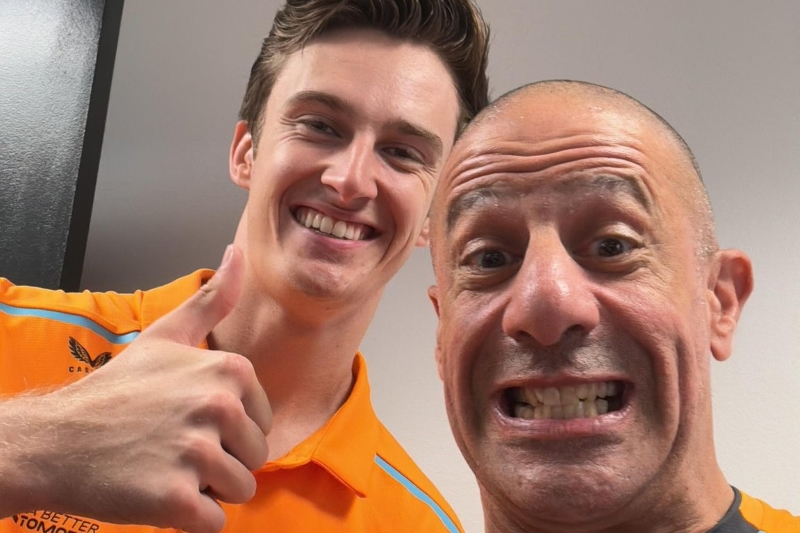
Pourchaire and Kanaan
Victor Martins
Martins may not have snuck in two F2 rounds before his rookie season, but he could still play the preparation card since he had two years in Formula Regional and two years in F3 under his belt before reaching F2, and won titles in both.
He arrived in F2 aged 21, and his rookie season in 2023 marked his third year with ART GP and fifth as a junior of the Alpine (nee Renault) F1 team. But it was his first time racing against Pourchaire since their karting careers, and while he could rely on having an older head on his shoulders, his team-mate had two seasons of F2 experience already in the bank.
Martins qualified second on debut and finished his first F2 race in third, saying after the sprint race that he needed “another approach” for feature races and that the biggest thing he learned was to “manage a bit more my emotion”. Immediately identifying what turned out to be his two main weaknesses showed maturity, but identifying is different to eradicating.
Two weeks later he took pole by a massive 0.744s in Jeddah, putting him 10th on the sprint race grid. He converted that into another podium and set the fastest lap, but again said he found it difficult “to manage my emotions” in the fight for victory. However, not wanting to make it sound like a repeating issue, Martins added: “I got so much experience [from] many years in Formula Renault and then F3. I got a lot of maturity, I know how to manage myself, manage my emotion throughout the race.”
Two points-free events followed, in which he still qualified third and eighth, but then Martins had improved form after Alpine handed him his first F1 test at Monza. He made reference to their “perfect support” as he then scored in the next 12 F2 races, rising from 15th to fifth in the standings and repeatedly outperforming Pourchaire on Fridays and Saturdays.
In conversation with Formula Scout, he stated his improved performance wasn’t related to a change in confidence.
“I’m fully confident, I don’t lose it. It’s just a matter of putting the level of pushing at the right level,” he said. “Performance has been great, even better than what I was expecting.”

Martins at the Red Bull Ring
An admission of dialling down the pace in the name of consistency, and a strategy which served him well through 2023.
The first, and only, win of his rookie campaign came in round eight at Silverstone from his third pole of the year and a few more podiums after that meant he remained fifth in the standings with an average of 5.7 points per race. Pourchaire had averaged six en route to the same championship position in his rookie season.
Martins’ approach felt like he spent his rookie season setting up a title challenge for 2024. And his consistency, having the joint most poles, being fastest on average for single-lap pace and second on long-run pace (although only getting the seventh biggest feature race points tally from that) meant that was what many expected of him this year.
The 22-year-old was therefore also talked of as a contender for a 2025 Alpine seat, and he chose to stay at ART GP for his sophomore F2 campaign. That continuity has not provided the desired performance boost.
F2’s new car for 2024 eradicated any advantage the team had held, and with no established pecking order a poor performance was harder to identify from the outside without driver feedback.
Martins went without points through the first two rounds, but said he was “not concerned”, maintained an aim of winning the title, reiterated he had confidence in the people around him and said while he wanted to learn what had gone wrong he did not want to give it too much focus. Having seen closely how Pourchaire handled the ups and downs of having title-contending tag on him, potentially Martins was learning from the mental mistakes of his former team-mate.
While he had been outqualified by his new team-mate Zak O’Sullivan at Bahrain, where pre-season testing had been, his experience of Jeddah enabled him to beat his rookie team-mate on one-lap pace. However, it was after going fourth fastest there that he admitted to qualifying now being a weakness and that the origin of the shortfall was yet to be identified.
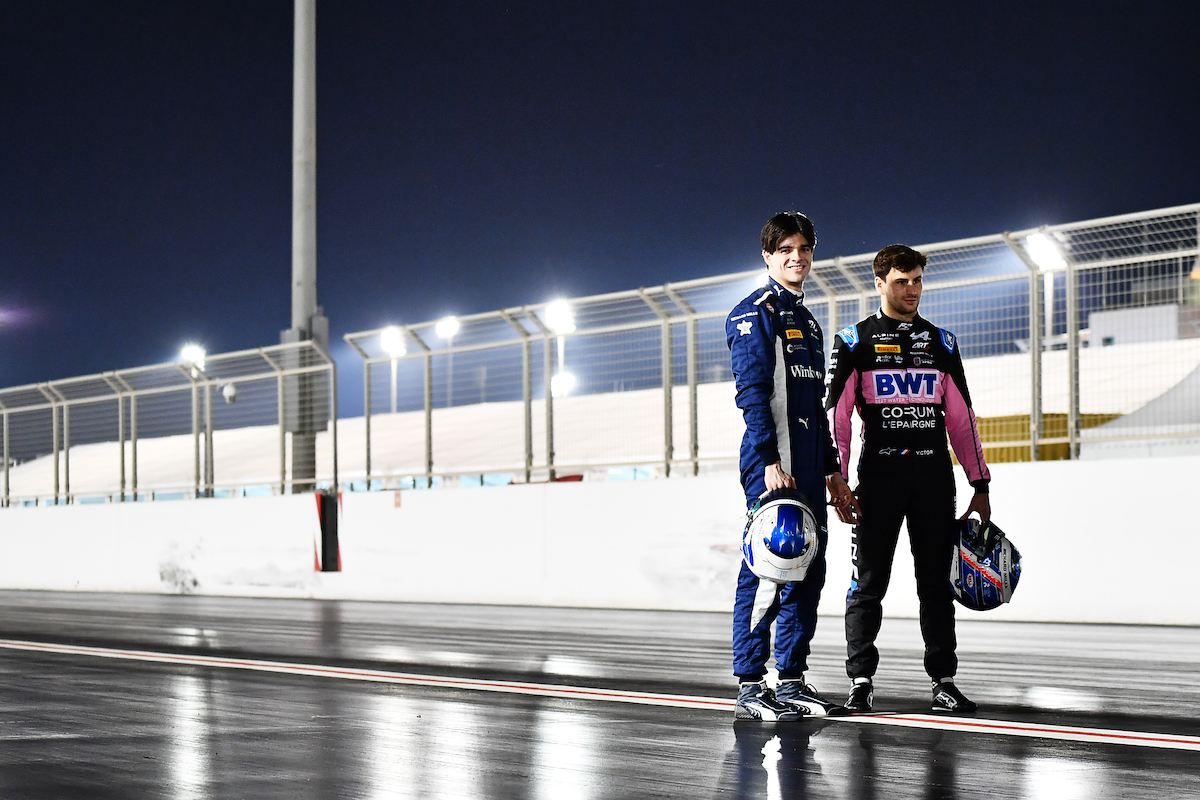
O’Sullivan and Martins
Martins scored in both races of round three in Melbourne, but was still only 18th in the standings. His mindset was that as long as the results continued to improve, his F1 seat prospects would do the same.
“I will say I’m only seeing an opportunity if I succeed, if I do well in F2. And that means it’s down to the work I will do, to the results I will show, and nothing else,” he said. “Actually I don’t see an opportunity if I don’t succeed in F2. So I’m not actually focusing on it right now.”
Pushing that distraction down the line seemed to be effective in that Martins, if to be compared directly to Pourchaire in the paddock, was less tormented by bad results. In fact, he may have learned directly from his team-mate.
But Martins’ F1 future was not going to be dictated by his results, but by the Alpine management. And that kept changing.
Team principal Marcin Budkowski and non-executive director Alain Prost (a big supporter of French talent) left at the start of 2022 and the former was replaced by Otmar Szafnauer. He fluffed the promotion of Alpine junior and F2 champion Oscar Piastri to an F1 seat, with Piastri leaving for McLaren against the team’s wishes and Szafnauer later getting sacked.
The CEO and sporting director roles changed too, two positions which would have a say on who gets to sit in the car, as well as an exodus of technical staff over the last 12 months that have clearly hampered the team’s competitivity. Then this summer Flavio Briatore, who successfully but infamously led the team in the 2000s, returned in an executive advisor role.
Briatore would not have taken on a role unless he could leave his mark, and has been busy doing just that. He’s made some frank comments in interviews, but unlike other major F1 figures he’s not been asked much – and therefore talked – about his team’s junior drivers. Martins had to prove his worth to the new management at Alpine, and there was little to verify his own comments with as journalists in the support paddock not easily able to catch an Alpine figure in a press pen.
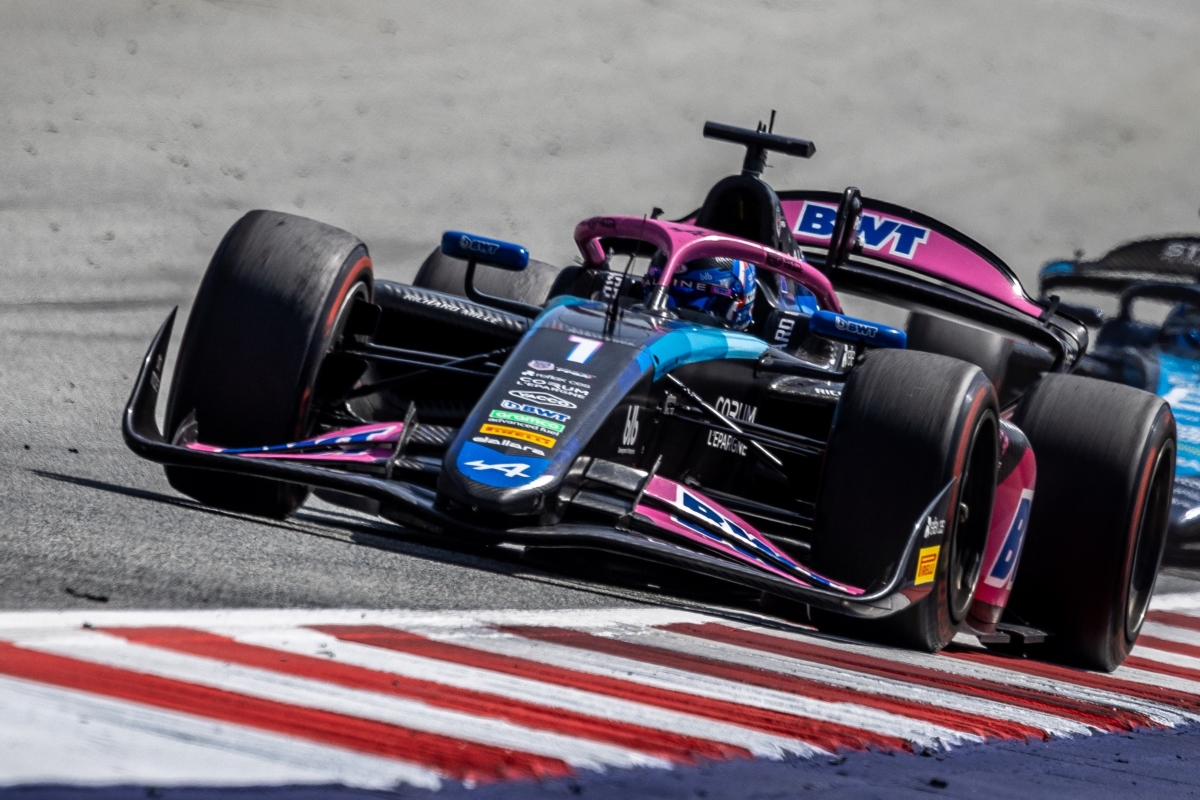
Martins at the Red Bull Ring
But then some unknowns were answered when Alpine announced in August it would promote reserve driver Jack Doohan to a race seat for 2025. The new management were not going to wait and see if Martins could turn his season around.
Martins had finished ninth in the Imola and Monaco feature races, then victory in the Barcelona sprint race lifted him from 20th to 13th in the standings and he did it on Briatore’s first weekend back in the F1 paddock. After “not understanding” his qualifying struggles, Martins and ART GP could now “start to see some good things on data and I start also to feel I’m confident in the car”. The result was a significant and timely mental boost.
“I need to see that I’m capable of doing things right from the start to the finish and show the team that I’m still here, because in motorsport one day, you can be a hero, and the day after, if you don’t perform, you don’t do a proper result, you are zero.”
Hero and zero are extremes which are not useful performance indicators, but Martins did not seem overly disheatened by the nadir that followed: a dire Red Bull Ring weekend where a struggle for pace meant he failed to score.
At Silverstone he was fifth in the feature race, he was second in both Hungaroring races then an electrical issue relegated him to last on the grid for both races at Spa-Francorchamps. It was there where ART GP boss Sebastien Philippe said the team had finally figured out its qualifying woes and could have been a pole contender, and he appeared to be right.
Martins was 0.188 seconds off pole at Monza and was sprint race runner-up, then in Baku qualified third and a slow pitstop denied him feature race victory. Those were also the first rounds where getting to F1 with Alpine in 2025 was off the table.
“It’s life, you need to accept and move on,” he said afterwards. About the pitstop, rather than Alpine’s choice for 2025.
Martins’ recent form means he is now on average the ninth fastest driver on absolute pace and seventh on average starting position from qualifying sessions contested (excluding Gabriele Mini who only raced in Baku), and remains in mathematical contention for the title.
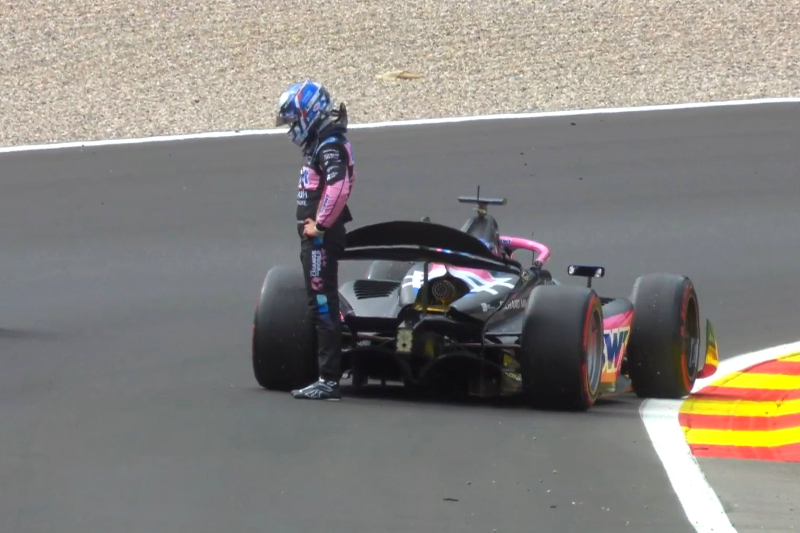
Electrical issues strike
That is an impressive turnaround, but it matters little. Martins needs to not get tied into thinking his presence in F2 now is about what he can do to unseat Doohan – the first junior the Alpine Academy and its predecessors had put in F1 in 16 years.
Two French talents with long-term F1 backing, neither of whom ever actually looked like they were going to be utilised in F1 while starring in F2. Both set very high expectations for themselves in their second years, paid the mental price when they weren’t reaching the targets set then successfully worked they way back to being one of the best in the field.
Both also wondered whether fully concentrating on F2 was a help or a hindrance for their results, and it would be a shame if at the end of 2025 both are F2 champions and neither are in F1.
Age is often a disadvantage in F1’s support paddock since youth is currency, but it should be an advantage for Martins who is two years older than Pourchaire.
He’s seen what a third year in F2 did for Pourchaire and what proving himself outside of the F1 circus did for his wellbeing, and the greater maturity Martins has shown with his own struggles this year hopefully means he is a driver who knows the benefit of getting to choose to leave F2 on his own accord rather than being ruled out by budget, his F1 hopes ending or even by becoming champion.